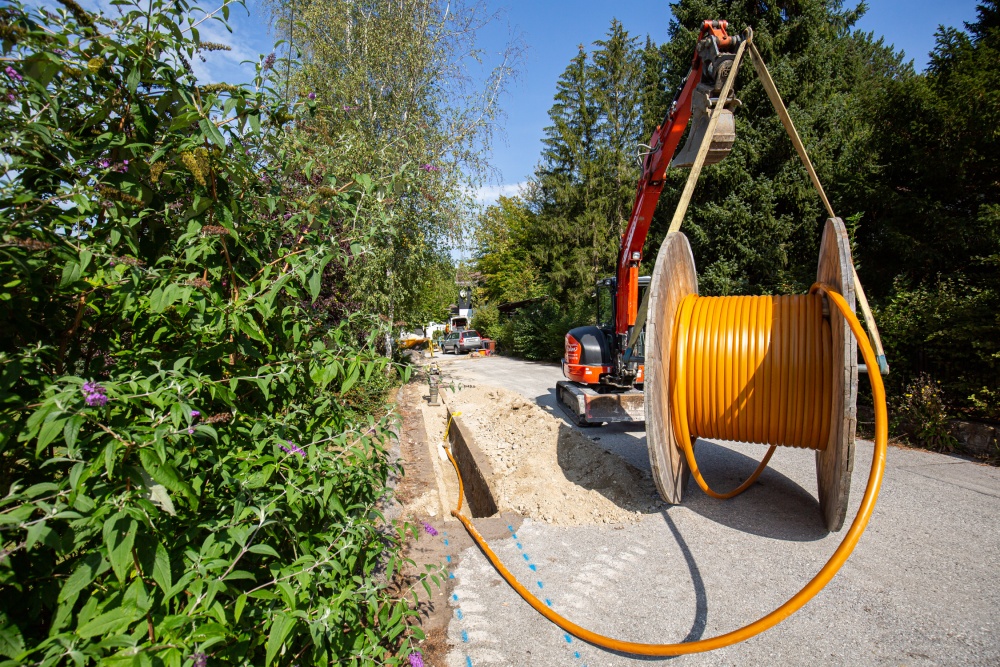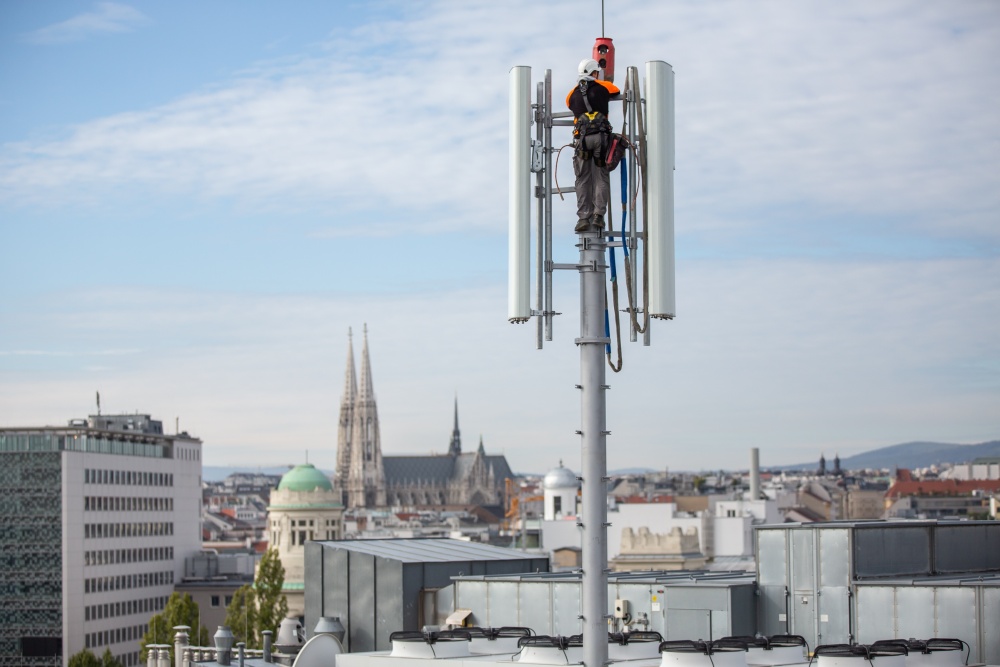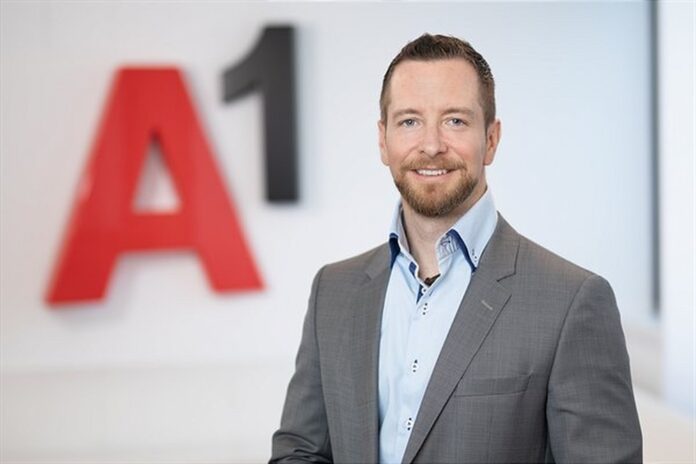Annie Turner talks to Alexander Stock about the operator’s strategy and his leadership in the midst of a pandemic – reframing what is possible now and in future.
Alexander Stock was one of the nine finalists who took part in our CTO of the Year Award roundtable in summer 2020, where he spoke with conviction and passion about the extraordinary things that A1 achieved during the first lockdown.
During the first wave of the pandemic, A1 moved its entire workforce to homeworking – and supporting customers from those home offices – over the course of a weekend. That lockdown showed how stable and reliable A1’s networks are, not only in Austria, but in all its Central and Eastern Europe markets.
This was a huge achievement for the network and IT teams, particularly given that there was more pressure on their processes than ever before, and Stock reflects, “What we have learned, and what we aim to keep, is the changed perspective that Corona has taught us.
“Working efficiently is not automatically connected to working in the office; decisions can be taken faster remotely. Cooperating digitally and participating in events to learn do not require physical presence. There are many other examples. All of them have one thing in common: modern ways of working, based on state-of-the-art tools and processes. We have also accelerated our own internal digitalisation and modernisation.”
He highlights that Covid-19 put digitalisation into the spotlight overnight and made it clear how important it is in all areas of life, from home working to home schooling and socialising. He describes it as a “call to action” which in some ways pushed A1 into digitalisation, but he insists, “Companies will not turn back the clock. Video conferences have replaced business trips and many things are now done remotely, which was unthinkable only a few months before.”

Fibre roll out: picture credit A1 Austria
Digital transformation
Stock has a refreshing approach to digital transformation. He explains, “I don’t see cost reduction and investments versus digital transformation as a trade-off anymore. The beauty of digital transformation is that when you do it well, in the right places and at the right speed, you get efficiency along with the enhancements.”
He continues, “With today’s coding possibilities, you can create flexibility where it is needed, without first needing to completely transform old platforms in a lengthy and expensive process. This means that we are building modern interfaces, based on a microservices architecture, for flexibility where it is really needed and when it’s needed. This approach accelerates the process, while keeping costs under control.
“The main reason for following this approach is that when our business colleagues come up with new requirements, then they usually need them yesterday, not in five to seven years’ time, which is the average length of a big transformation project. Today we can deliver most of their expectations, while shifting our overall transformation into the background.”
There are many benefits of this approach, he says. “This gives us – the IT and technology teams – full control of the speed and cost of transformation, and we can keep up with fast delivery for the business. You can imagine this as frontend and backend processes, where the front represents the business need and the backend represents our technological house-keeping.”
Company culture and structure
The human and cultural aspects of transformation are rising up the agenda in telco boardrooms around the globe, along with the issues of inclusivity and reskilling staff, as well as attracting new talent with desperately needed skills in data analytics, AI and so on. This puts a lot of responsibility on the CTO’s shoulders, which Stock acknowledges.
He says, “Attracting new people with new skills is one of the biggest challenges: It can take a very long time to fill new positions. We try to build the key knowhow we need internally, but, of course, we also need partners, such as in areas like agile methodologies.
“Building a scrum team sounds simple; in fact, agile requires new job functions, like a scrum master or product owner. We need to put new career paths in place for those roles, and a new human resources (HR) structure. All this has to be developed.”
He stresses, “Moving from the analogue world to the digital one is not just putting a new face on an old process. It means re-engineering that process or even the whole product. Let’s take the digitalisation of TV, for example. It involves not only selling services online, but getting rid of the set-top box, which means you don’t need logistics, delivery, set-up and so on anymore.
“Services are over the top, in real time, and all your processes from sales to support have to be reinvented.”
Managing and developing talent
As for managing and developing talent in-house, A1 has a multi-faceted approach. Stocks says, “Firstly, it’s about constant learning and fostering curiosity about new things. Then digitalisation and innovative communication solutions are creating completely new opportunities, but they are also challenging the design of our existing working and learning environments.
“Collaboration, independent of time and space, as well as the exchange via internal social networks or knowledge platforms offer enormous potential to promote the development of skills, and the productivity and attractiveness of the working environment as a whole.”
However, Stock emphasises that, “Constant learning is not only a technological thing, it also requires every one of us to adapt. The boundaries between our private worlds and those of business and learning are blurring. We have already started to learn [digital skills] while following our hobbies, for example.”
He believes there is no question that developing and expanding people’s skills plays a very important role in the technology sector, explaining, “By the end of the year, every employee will have had an interview with their manager to determine what skills they have or the roles they play. Then we ask if these skills and roles be needed in the future, based on team-level goals.
“We see if there is a gap between existing and required skills, then we will take measures to close these gaps, through training, for example. If the role is completely eliminated, further discussions are held with the employee to find a solution.”
This is part of a big shift, Stock says, away from “old-fashioned ‘performance-management’ to strategic HR, not only to answer the question about who has high potential, but also to know in which roles and skills I need them in the future.”
Personal responsibilities
In a rapidly changing work environment, there is an onus on employees to be aware of developments and take charge of their careers. Stock states, “For me, it is important that the employees themselves take control of their own future and take responsibility to expand their skills and remain competitive and attractive to the company. As leaders, our role is to create an environment that allows for this required flexibility and empowerment.”
Stock points out that for almost every telco there are big demographic changes coming in the workforce, because IT and networking teams tend to comprise older people. He says, “The average age of technology employees is 47 and many will retire in the next few years. These skill development measures will help us to control the situation and adapt to new requirements. To cover our future needs for young skilled workers we also train apprentices in the field force and ICT services.”
For instance, in 2019, A1 provided training for 100 apprentices in Austria. In addition, there is a long-standing cooperation with the University of Applied Science, the Technikum Vienna, with whom the operator has 19 dual students – that is, they split their time between studying and working at A1 in IT or ICT and receive part-time pay and the operator pays their tuition fees.
Infrastructure priorities
The pandemic has highlighted the importance of connectivity for many aspects of life, from work to study, entertainment, social cohesion, access to support and more. A1 already had an ambitious build-out schedule for fibre infrastructure. It has the largest fibre network in Austria, at about 60,000km, and this is growing significantly in all federal states.
In the first six months of 2020 alone, A1 invested more than €226 million in infrastructure expansion and laid more than 5,000km of fibre cable in over 160 municipalities. More than 2.1 million households are already connected to the A1 fibre optic network.
Stock says, “The pandemic and associated lockdowns interrupted our roll-out for a short time. We faced delays in the issuing of permits and in the activities of the construction companies, but normal operations resumed a few weeks after the first lockdown.”
He continues, “The 5G network is expanding rapidly. We are following a two-path strategy: pushing 3.5GHz 5G [base] stations into rural and high-density areas, and rolling out 2.1GHz 5G for [denser] coverage. In rural areas we can finally deliver fibre-type speeds to communities with poor infrastructure and in high-density urban areas we can achieve capacity upgrades. In between, we are fast closing coverage blind spots with 2.1GHz.
“Our goal is to rapidly expand the 5Giganetwork, a combination of Austria’s largest fibre optic network and the fastest 5G technology to provide Austria with high performance mobile internet, in cities and rural areas.”

Setting up 5G against the backdrop of the Votiv Church in Vienna: picture credit A1 Austria
Setting the trend
Stock explains that since the latest frequency auction, A1 holds the largest share of spectrum at about 38%, which, “We require to serve the biggest customer base in Austria. In addition, local companies use A1 campus networks based on 4G and 5G technology.
“This builds the foundation for efficient digitalisation, the use of IoT and innovative technologies such as edge cloud and network slicing. 4G slicing is an innovative solution that we have developed with our partner Nokia to deliver innovative use cases faster.”
As examples, Stock points to A1’s implementation of a campus network at Vienna International Airport, which guarantees the highest availability through pre-5G technologies and enables secure IoT connectivity. He says, “Network slicing gives us the possibility to design the network’s performance according to our requirements. Thus, Vienna Airport is optimally prepared for the digital challenges of the future.”
Another example is ÖBB – Austrian Federal Railways. A1 intends to be the first mobile service provider worldwide to implement network slicing in 4G and 5G networks for ÖBB Infrastructure AG, working with its technology partner Nokia. Stock describes this as a “trend-setting project” and adds that A1 has also established several 5G research campuses, “Where we aim to accelerate use case development with our partners for our customers.”
A sustainable future
So how does Stock see the impact of the pandemic and the lessons learned – particularly the redefinition of what is possible, the sense of urgency, the innovation and the total support of employees – playing out in the company’s culture and indeed the company’s future?
He replies, “Sustainability and our contribution to the society is very important for us, especially during these challenging times. Therefore, for us as the A1 Leadership Team, the guiding principle is to create ‘a sustainable future for Austria’.
“This means that we consider ourselves more than a service provider: as almost every Austrian is a customer of A1 we have a special role and responsibility when digitalisation has become a central driver of the economy and society.”
Stock concludes, “In five years’ time we would like to have regained the status of Austria´s number one place to work. Only with this reputation can we keep and continue to develop the teams and skills required for such a journey. During the same period, we will have created not only the best 5G network in Austria, but we will also set the standard within the industry. 5G will – like the arrival of the smartphone – build the basis for endless IoT use cases and will accelerate the speed of economic development.”


